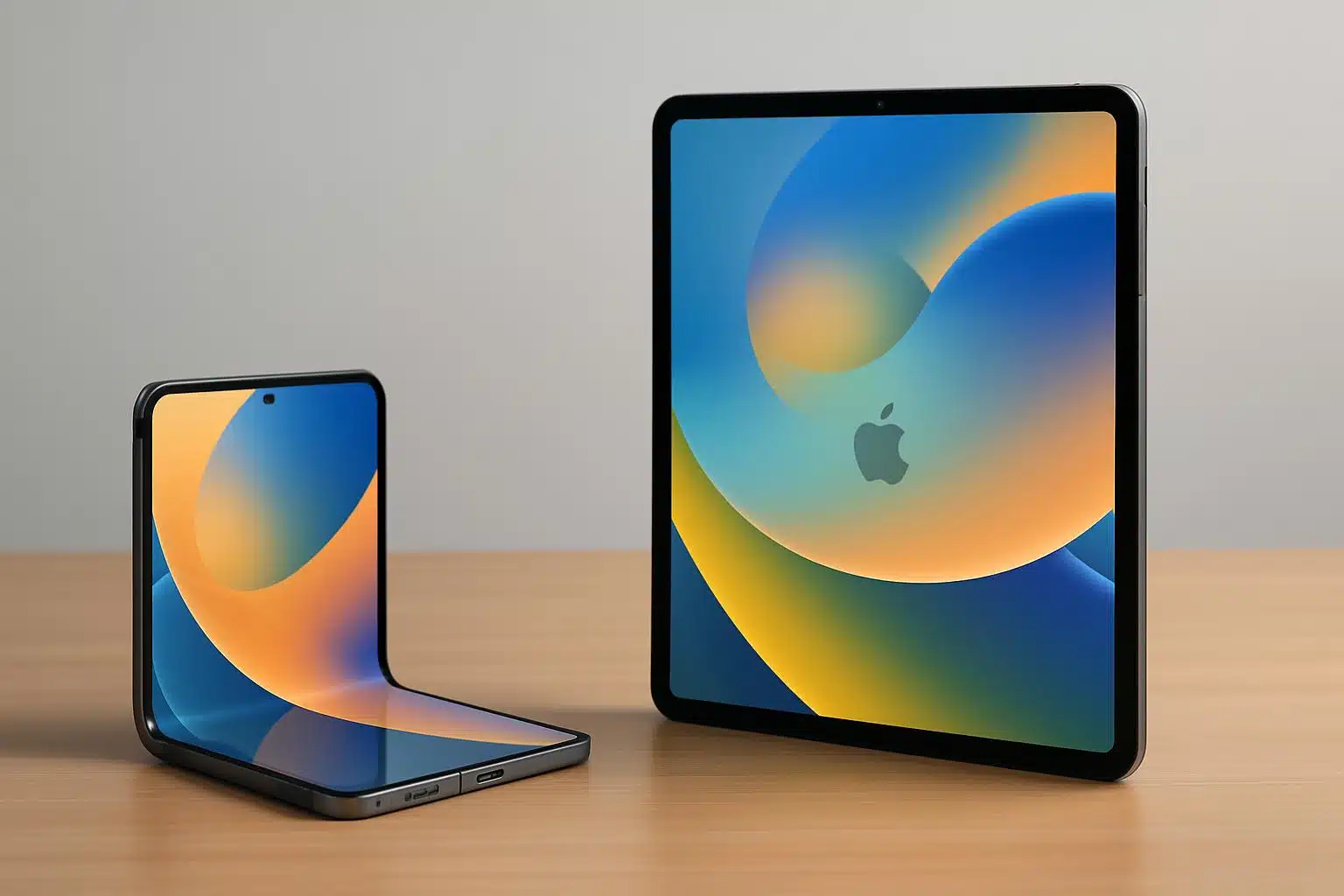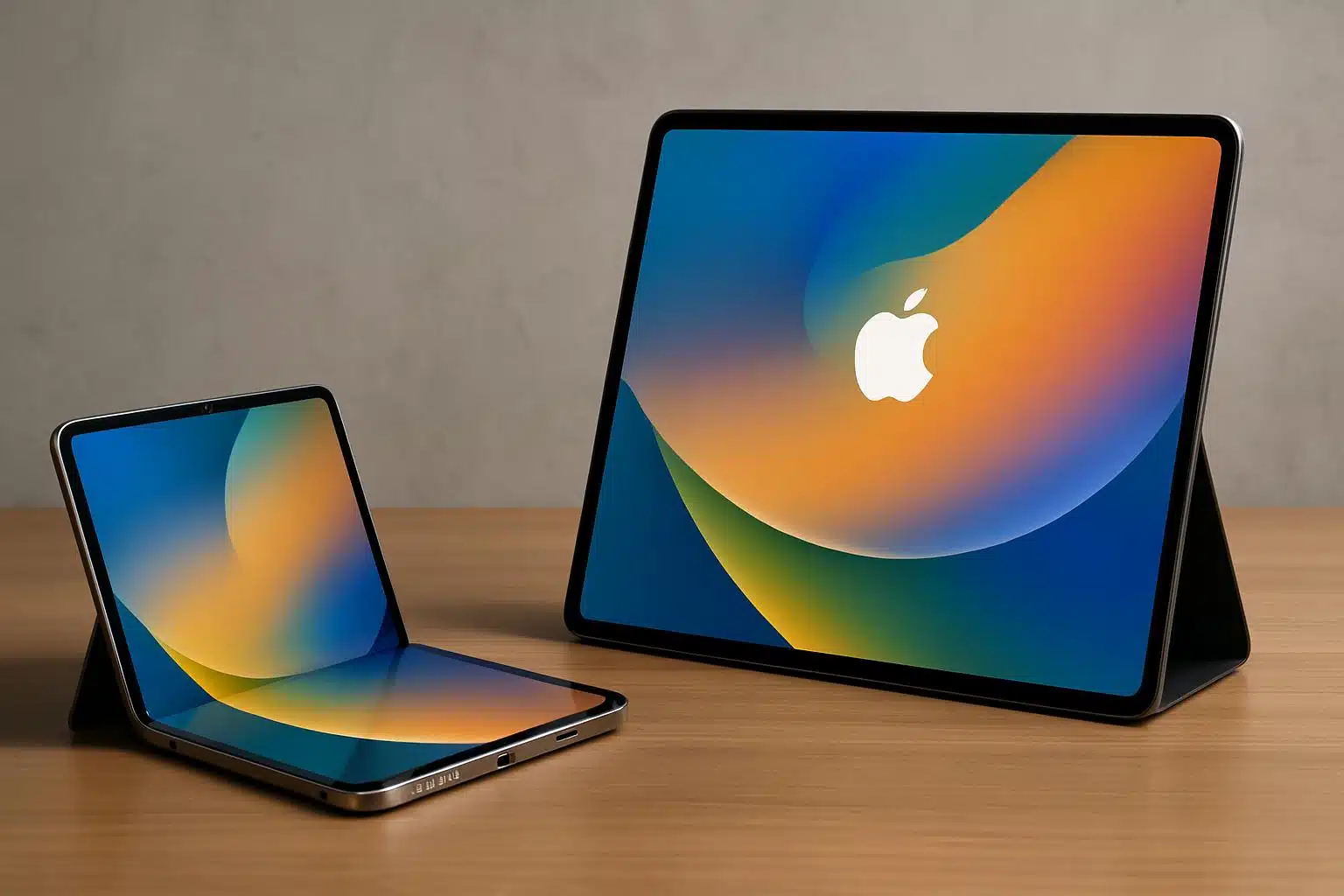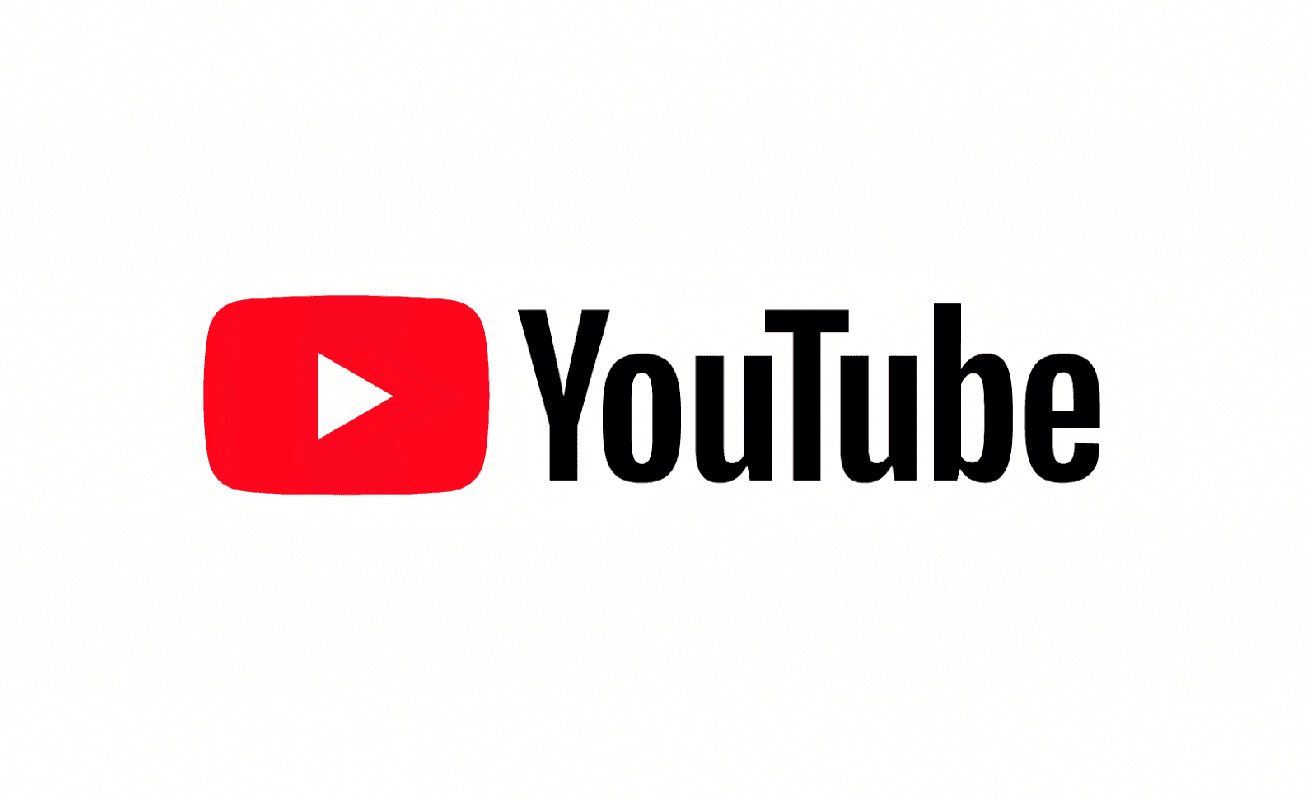Apple is lining up its first foldable iPhone for 2026, with a larger foldable iPad slated to arrive two years later, according to people familiar with the company’s roadmap and repeated supply chain signals. If the timing holds, Apple will enter the foldables category roughly seven years after the first wave of devices hit the market—late by design, but positioned to capitalize on a maturing technology stack and growing consumer interest.
What to Expect from Apple’s First Foldable iPhone
Analyst Ming-Chi Kuo expects the foldable iPhone to debut as part of the iPhone 18 family in 2026. Early targets suggest a book-style device that opens to a larger canvas—optimized for messaging, video, and multitasking—while closing to a pocketable footprint. The priority, say supply chain sources, is a crease-minimized display, robust hinge endurance, and drop resilience that meets or exceeds Apple’s current standards.

Multiple display industry trackers indicate Apple has been testing OLED panels from Samsung Display and LG Display, with internal hinge modules reportedly cycling through hundreds of thousands of open-close tests to hit long-term reliability goals. Expect Apple to lean on its own silicon and on-device intelligence for adaptive UI layouts as the screen transitions between folded and unfolded states.
Bigger Foldable iPad on the Roadmap
The second act is a larger-screen foldable iPad targeted for 2028. While prototypes have varied, most chatter points to an unfolded size in the 18–20 inch range—essentially a portable canvas that could collapse into a slimmer, more transportable package. That form factor invites accessories: think a magnetic keyboard, Pencil support, and refined multitasking that edges the device closer to an ultraportable laptop.
Apple’s calculus here is clear: the iPhone can set the volume base, while the foldable iPad can showcase high-end hardware and new workflows for creative pros, mobile coders, and enterprise users who live in documents and dashboards.
Supply Chain Signals and Materials
One throughline across both products is ultra-thin glass (UTG) cover material. Kuo reports Apple is tapping Corning for UTG, with General Interface Solutions assisting on cutting, edge treatments, inspection, and packaging. UTG in the sub-50-micron range can deliver a smoother feel than plastic films and better scratch resistance—key to closing the gap with a conventional iPhone display.
Beyond the front layer, expect specialized hinge components, shock-diffusing frames, and revised thermal paths to protect flexible OLED stacks. Industry watchers at DSCC have noted steady improvements in foldable panel yields across the ecosystem, a prerequisite for Apple’s volumes and quality bar.
Pricing, Volumes, and Market Context
Kuo projects Apple could ship roughly 8–10 million foldable iPhones in the launch year, with the potential to reach around 25 million units the following year if supply ramps and user satisfaction are strong. By contrast, the larger foldable iPad is likely to be a niche, premium product with lower volumes, reflecting higher bill of materials and more complex assembly.

IDC has estimated that global foldable phone shipments are climbing rapidly, with tens of millions of units sold annually and momentum building toward the latter half of the decade. Samsung remains the category leader, while entrants from Google, Motorola, and Chinese brands have broadened the price spectrum. Apple’s entry would not be first, but it could redefine expectations around durability, software polish, and resale value—the levers that typically move iPhone buyers.
Why 2026—and What Could Slip
Apple’s timeline suggests a few gating items: panel yield stability, hinge longevity under extreme temperatures, and a display crease that passes the “invisible in daily use” test. Reports from Bloomberg and The Information have described multi-year prototype cycles, including hinge redesigns and panel swaps as vendors iterate. If any of those variables fall short, Apple has historically delayed rather than compromise the experience.
There’s also a portfolio question. A foldable iPhone must complement, not cannibalize, the Pro line. Expect differentiation via screen size, multitasking, and perhaps exclusive camera angles or table-top modes, rather than pure processor or lens upgrades.
What It Means for Developers and Accessories
For developers, a foldable iPhone introduces new breakpoints and posture states—folded, half-open, and fully open—plus opportunities for dual-pane UIs and continuity between external and internal displays. Apple has already laid groundwork with adaptive layouts in iOS and iPadOS; expect new APIs that formalize posture detection and per-pane behaviors.
On the accessory front, MagSafe alignment on a variable-thickness device, case designs that protect the hinge without adding bulk, and stands that exploit tabletop modes will all be fertile territory. If Apple brings Pencil support to the foldable iPad, it could become the company’s most versatile sketch and markup device yet.
The upshot: Apple’s measured entry into foldables appears locked to 2026 for iPhone and 2028 for a larger foldable iPad. With maturing UTG, improved hinges, and a software stack built for adaptive screens, the company is positioning not to chase the category, but to reset it.







